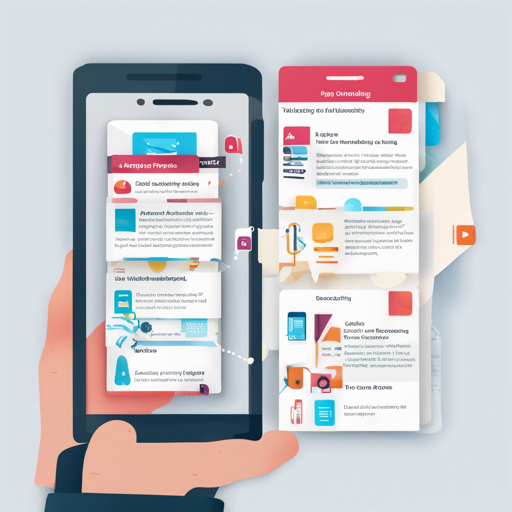In the world of app development, making a great first impression is crucial. One way to achieve this is through an effective onboarding experience. Enter the Paper Onboarding library—an Android library designed to create beautiful and smooth onboarding experiences in your applications. In this article, we’ll walk you through how to integrate and use this library in your Android project.
Requirements
- Android 4.0.3 Ice Cream Sandwich (API level 15) or greater
- Your favorite Integrated Development Environment (IDE)
Installation
You can easily add the Paper Onboarding library to your project by following these steps:
- Download the AAR package from this link or use Maven repository:
- For Gradle, add the following line to your build.gradle file:
- For SBT:
- For Maven:
implementation 'com.ramotion.paperonboarding:paper-onboarding:1.1.3'libraryDependencies += "com.ramotion.paperonboarding" % "paper-onboarding" % "1.1.3"<dependency>
<groupId>com.ramotion.paperonboarding</groupId>
<artifactId>paper-onboarding</artifactId>
<version>1.1.3</version>
<type>aar</type>
</dependency>Basic Usage
Once the library is installed, you can create your onboarding experience in a few simple steps. Think of it like building a beautiful path that guides your users through your app:
Step 1: Prepare Your Pages
Firstly, you’ll need to prepare the content for each slider page. Each page is essentially a unique setting in your story. For instance:
PaperOnboardingPage page1 = new PaperOnboardingPage("Hotels",
"All hotels and hostels are sorted by hospitality rating",
Color.parseColor("#678FB4"), R.drawable.hotels, R.drawable.key);
PaperOnboardingPage page2 = new PaperOnboardingPage("Banks",
"We carefully verify all banks before adding them to the app",
Color.parseColor("#65B0B4"), R.drawable.banks, R.drawable.wallet);
PaperOnboardingPage page3 = new PaperOnboardingPage("Stores",
"All local stores are categorized for your convenience",
Color.parseColor("#9B90BC"), R.drawable.stores, R.drawable.shopping_cart);
ArrayList pages = new ArrayList<>();
pages.add(page1);
pages.add(page2);
pages.add(page3); Step 2: Create Your Onboarding Fragment
Next, create a fragment from PaperOnboardingFragment and pass the prepared pages:
PaperOnboardingFragment onboardingFragment = PaperOnboardingFragment.newInstance(pages);Step 3: Add the Fragment to Your Activity
Now, it’s time to add the onboarding fragment to your activity. This act is like placing your beautifully wrapped gift into the hands of a happy recipient:
FragmentTransaction transaction = fragmentManager.beginTransaction();
transaction.add(R.id.fragment_container, onboardingFragment);
transaction.commit();Step 4: Add Event Listeners (Optional)
If you wish, you can add event listeners to execute custom logic, such as navigating to another screen when the user swipes from the last screen:
onboardingFragment.setOnRightOutListener(new PaperOnboardingOnRightOutListener() {
@Override
public void onRightOut() {
FragmentTransaction transaction = fragmentManager.beginTransaction();
Fragment blankFragment = new BlankFragment();
transaction.replace(R.id.fragment_container, blankFragment);
transaction.commit();
}
});Troubleshooting Ideas
If you encounter any issues during the implementation, consider the following troubleshooting tips:
- Ensure you’re using the correct Android API level specified in the requirements.
- Check if the library is properly included in your project dependencies.
- Review your code for any typos or syntax errors.
- If the onboarding screen doesn’t display as expected, verify your layout resources and fragment container ID.
For more insights, updates, or to collaborate on AI development projects, stay connected with fxis.ai.
Conclusion
Enhancing your app’s onboarding experience can significantly affect user retention and satisfaction. By implementing the Paper Onboarding library, you’re now equipped to create a visually appealing and functional onboarding interface. At fxis.ai, we believe that such advancements are crucial for the future of AI, as they enable more comprehensive and effective solutions. Our team is continually exploring new methodologies to push the envelope in artificial intelligence, ensuring that our clients benefit from the latest technological innovations.

